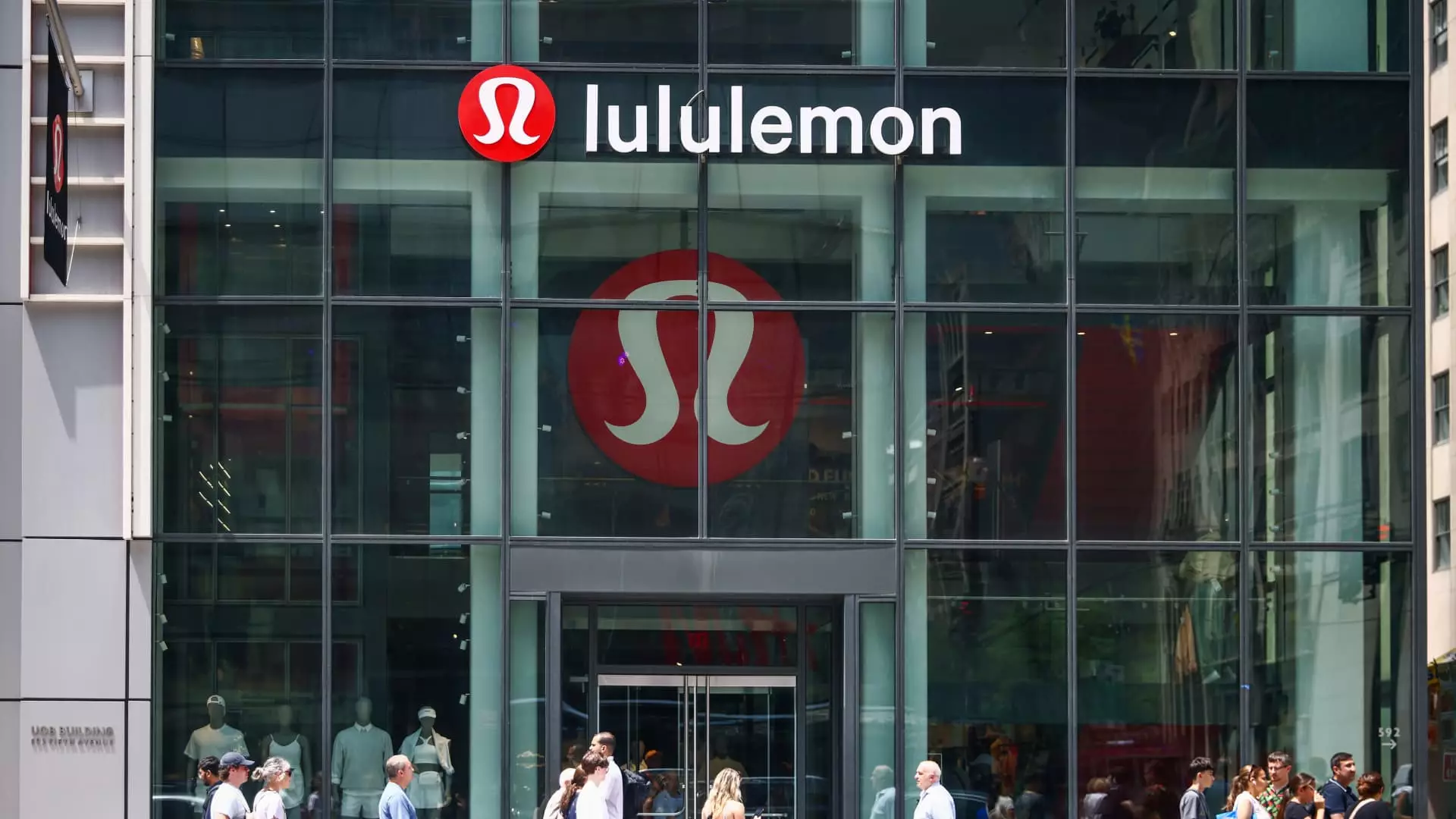Lululemon Athletica Incorporated recently announced its fiscal fourth-quarter earnings that, on the surface, showcased a solid performance. The company reported earnings per share of $6.14, exceeding Wall Street’s expectations of $5.85. Similarly, its revenue reached an impressive $3.61 billion, surpassing analyst estimates of $3.57 billion. In contrast to its fourth quarter of 2023, where revenue was $3.21 billion, this year shows robust growth. Yet, beyond these glowing numbers, analysts and investors seemed to fixate more on Lululemon’s guidance for 2025, which prompted a significant drop in share prices—over 6%—in after-hours trading.
The crux of the issue lies in the expectations set against disappointing forecasts. For a company that has built its image on consistently outperforming market expectations, this stagnation in guidance represents a troubling shift. The retailer anticipated first-quarter revenue to be between $2.34 billion and $2.36 billion, but analysts had set their sights higher at $2.39 billion. Further amplifying this uncertainty, Lululemon’s projection for full-year 2025 revenue ranged from $11.15 billion to $11.30 billion, again slightly below the consensus estimate of $11.31 billion. The implications of falling short in guidance, even marginally, seem to send a loud message to investors: Lululemon may not be the unassailable market leader it was once perceived to be.
Comparable Sales and Market Relevance
When assessing Lululemon’s performance, we must address the crucial metric of comparable sales, often a key indicator of a brand’s long-term health. The company reported a mere 3% increase in comparable sales year-over-year, falling significantly short of the anticipated 5.1%. Though it’s important to note that international sales boomed with a remarkable 20% growth, stagnation in the Americas presents a gaping hole in the brand’s narrative. Flat comparable sales domestically suggest a potential waning interest in a market that initially drove its meteoric rise.
Lululemon’s once-vibrant appeal seems to be diminishing among its core consumers in North America, leading one to question whether the brand’s golden reputation is becoming tarnished. The booming international numbers can serve as a shiny distraction, but fundamentally, any brand’s success hinges on retaining its loyal customer base at home. If Lululemon cannot rekindle enthusiasm with its American customers, growth in emerging markets may not be able to compensate for domestic complacency.
The Broader Implications
Investors who have grown accustomed to Lululemon as an outperformer might feel rattled by these signals of weakness. The brand’s image as a leader in the athleisure market is undoubtedly part of its appeal, buoyed significantly by cultural trends that celebrated health and wellness. However, tides can turn rapidly in consumer markets, and brands entrenched in lifestyle can sometimes feel the brunt of shifts in consumer sentiment. Doubts around future performance can provoke erratic market reactions, as illustrated by Lululemon’s market response to the latest earnings release.
As Lululemon re-evaluates its operational strategies and market positioning, it must remain vigilant not just about hitting revenue targets, but about energizing its consumer base. Maintaining a strong consumer connection is essential to foster brand loyalty in an increasingly competitive landscape. Failing to navigate these waters wisely could result in a more pronounced erosion of Lululemon’s once-unquestionable status. In the world of business, even the mightiest can sometimes find themselves grappling with existential dilemmas.

